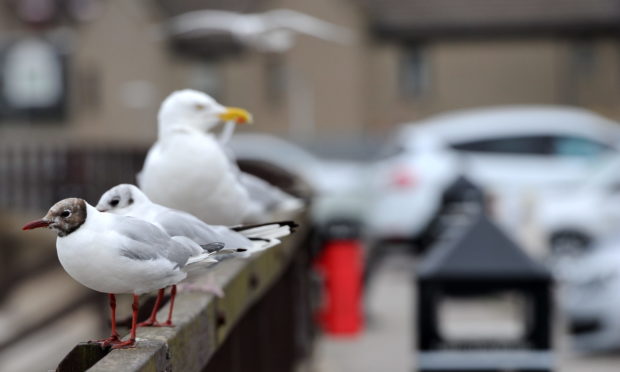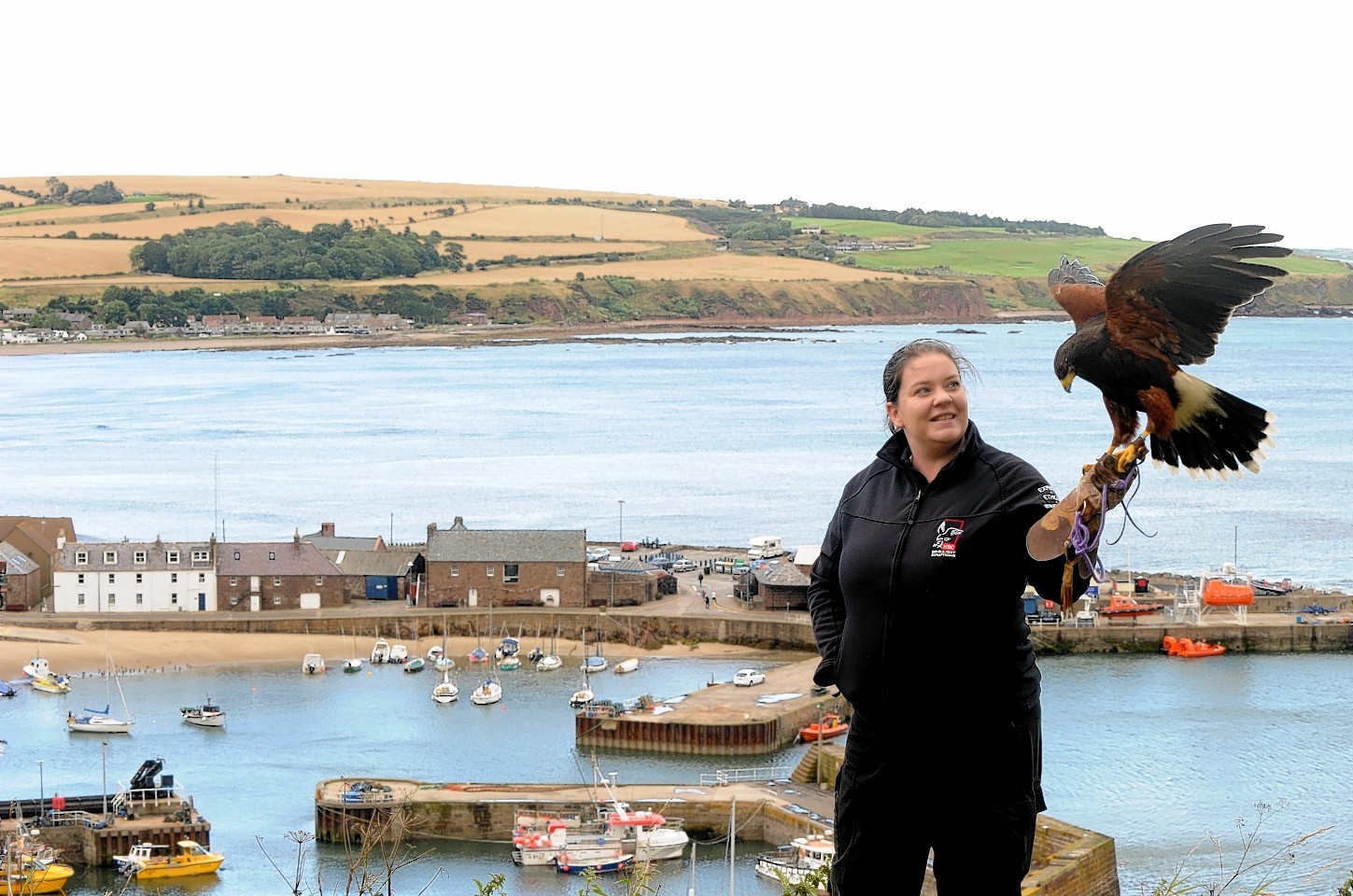Aberdeenshire Council has run out of money to combat the “rats of the sky” in a north-east town.
Over the years, Stonehaven has explored a variety of methods to challenge its population of pesky herring gulls.
Nests have been removed, hawks deployed and buildings made “gull proof” to fend them off.
The birds, which have been referred to as “rats of the sky” in the past, have a habit of nabbing food from the hands of unsuspecting people walking through the coastal town.
Soon, they will begin nesting and laying eggs once again.
In previous years, the Stonehaven Town Centre Improvement Group (STIG) – a collaboration between Aberdeenshire Council and community groups – has contracted specialists to remove nests and eggs during the mating season.
That, however, had only been made possible thanks to the financial support of property owners.
Now it has emerged the council no longer has for the budget for the work and has said it is “extremely unlikely” the town’s gull egg and nest removal plan will go ahead this year.
A spokesman said: “I can confirm it is extremely unlikely the gull egg and nest removal programme in Stonehaven will go ahead this year due to the lack of residents and businesses signing up to the scheme.”
Last night chairman of the Stonehaven Community Council, Raymond Christie, described the gulls as a “huge problem” for the town – and in particular the town’s ice cream shops and chippers.
He said: “Council officers tried to get money from residents and local businesses, but the take-up this year has been less than in 2019.
“There is also no money for the council to cover the costs, which is not surprising given this year’s cuts.
“The gulls are already spreading and we will have a major increase by the end of the year now.
“Peterhead and Fraserburgh have similar problems.”
Nesting season typically begins in April for gulls, with many of the problems stemming from the hatching of young birds which adds to competition for food.
Over the years, a variety of efforts have been made to reduce the numbers of herring gulls in Stonehaven.
Mr Christie added: “They can be quite scary to some people.
“They’re getting braver at the seafront – no ice creams or chips are safe.”
In 2014, a Harris hawk named Sky was deployed to tackle Stonehaven’s gull problem.
Handler Kirsty Imlay ran a series of patrols with the bird of prey, and the scheme was extended as a result of its success.
Sky did not harm the gulls but disturbed them, in a technique used in places such as Aberdeen FC’s Pittodrie Stadium and local schools and council offices.
In 2017, the nest removal programme was introduced, and the following year 328 eggs were gathered.
A contractor was hired to carry out the work and made three visits – at the end of May and during June at the time of the mating season.
The area targeted were streets leading from the Square with food outlets, and where gulls frequently swooped down on people in the search of scraps.
Last year, residents and businesses in Stonehaven town centre were desperately urged to support the nest removal scheme as funds stretched at Aberdeenshire Council.
The work costed £6,450 per year, with the local authority putting in £1,500 each year, and locals asked to cover the remaining costs.
Letters were sent to properties in the town centre asking for support and outlining plans for removing eggs from rooftop nests but, this year, not enough offered financial support.
Last week, Exeter University unveiled research that showed that urban gulls stealthily watch humans eat.
Herring gulls were presented with two identical food items – one of which they had seen a human holding.
The gulls pecked more often at the handled food, suggesting they use human actions when deciding what to eat.
Madeleine Goumas, of the Centre for Ecology and Conservation at Exeter’s Penryn Campus, told Science Daily: “UK herring gull numbers are declining, but urban populations have increased.
“Despite the fact they’re a common sight in many towns, little is known about urban gull behaviour.
“We wanted to find out if gulls are simply attracted by the sight of food, or if people’s actions can draw gulls’ attention towards an item.
“Our study shows that cues from humans may play an important part in the way gulls find food and could partly explain why gulls have been successful in colonising urban areas.”
The study follows previous research which found that staring at gulls makes them less likely to steal food.

